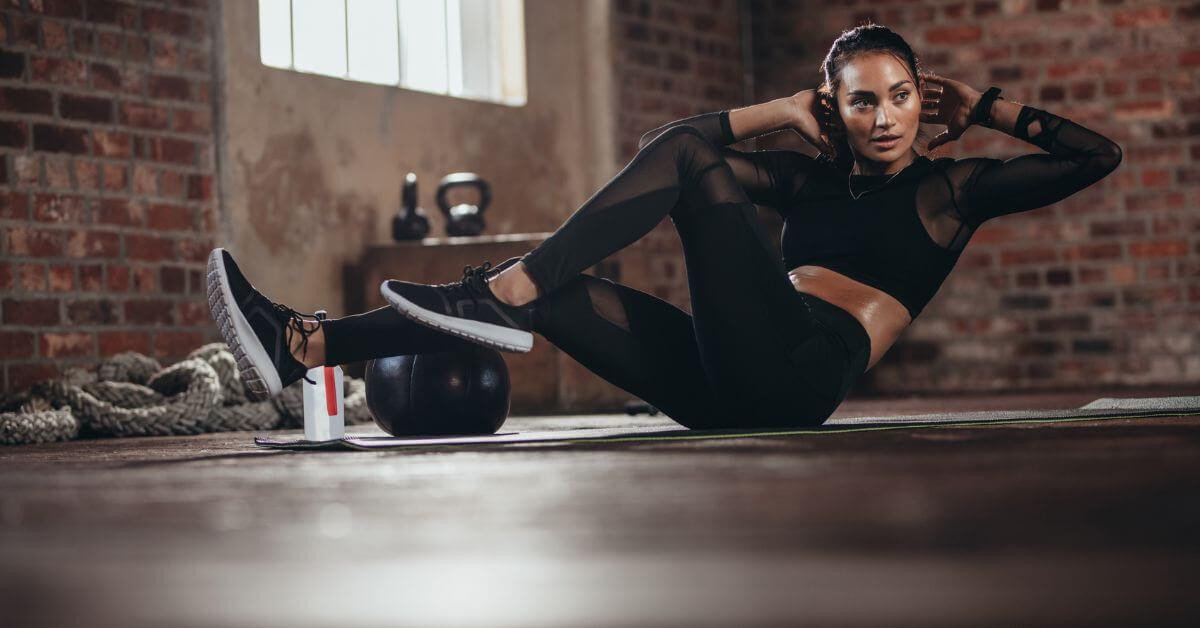Functional core exercises target the muscles in your core, which include your abs, lower back, hips, and pelvis. These best functional core exercises will enhance your balance, stability, and posture.
Table of Contents
ToggleThese exercises concentrate on strengthening the muscles that help to stabilize your spine and torso. Functional core exercises attempt to train the complete core musculature, in contrast to typical ab exercises that just target the rectus abdominis (six-pack muscle).
This helps to develop a more balanced, functional, and injury-resistant physique. Functional core exercises can improve your sports performance, lower your risk of back discomfort and other related problems, and make daily actions like lifting and carrying items simpler and more stable.
Start Building Your Dream Body Today
Ready to elevate your fitness game without falling into the trap of dull, repetitive routines that just don’t deliver? Imagine sculpting your ideal physique and boosting your health, all while still enjoying life’s pleasures, like those irresistible weekend getaways and your aunt’s legendary cheesecake. With our online fitness and nutrition coaching service, you don’t have to compromise. Dive into a personalized fitness journey that blends perfectly with your lifestyle, not against it. Book your completely free discovery consultation today, and take the first step towards a transformation that doesn’t require giving up the joys of life.

“I was skeptical about online fitness coaching, but Functional Body Savage completely changed my perspective. Vanja and Radomir’s personalized approach and attention to detail have helped me achieve goals I never thought possible. I’m stronger, more confident, and grateful for their guidance.”
Emily Thompson, San Francisco, CA
Learn More About Our Online Coaching ServiceQuick Summary
- Functional core exercises are designed to simulate real-life motions and activities, in contrast to typical core workouts, which may only be concerned with achieving six-pack abs.
- Exercises that just use your body weight or equipment like kettlebells, dumbbells, or medicine balls can be used in functional core training.
- As it improves posture, lowers the chance of injury, and increases athletic performance, developing a functioning core is essential for general health and fitness.
10 Functional Core Exercises for Stability and Posture
Functional core exercises are a crucial component of a well-rounded fitness regimen and can help you feel better overall [1].
Get ready to push your core and establish a strong, functional foundation as we go through 10 efficient functional core movements in this section.
“Functional anatomy has demonstrated that the primary purpose of the core musculature is the prevention of movement.” – Michael Boyle, Strength and Conditioning and Strength Training Consultant
1. Pallof Press
The pallof press is considered a transverse plane exercise that focuses on the rectus abdominis, obliques, and transverse abdominis muscles of the torso. It is one of the best pieces of core strength and stability gear frequently used to enhance posture, core stability, and anti-rotational strength since it acts to offset the effects of rotational forces.
Cable machines, resistance bands, and TRX suspension trainers may all be used to accomplish the pallof press. You can also perform the kneeling pallof press variation if you are a beginner.
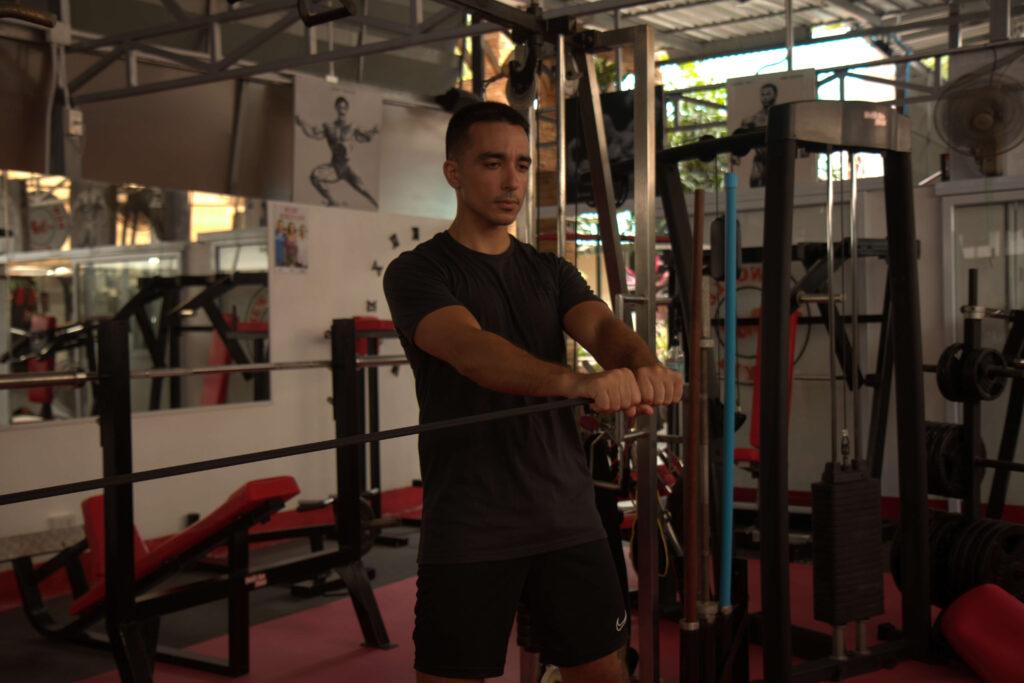
How to Perform Pallof Press
- Stand facing a cable machine or resistance band, with the cable or band attached to a high pulley at chest height.
- Stand with your feet shoulder-width apart and grasp the cable or band firmly with both hands.
- Press the wire or band straight out in front of you and away from your body while maintaining an engaged core.
- Hold for a short period of time, then let go and repeat for a predetermined amount of reps.
- You can move away from the cable machine or resistance band, try completing the exercise with a weight, or both to make it more challenging.
2. Dead Bug
The dead bug is a core functional exercise that should be performed in the sagittal plane. It primarily targets the lower back, hips, and abdominal muscles such as the rectus abdominis, obliques, and transverse abdominis. It gets its name from the body posture during the exercise, which resembles a dead insect laying on its back.

How to Perform Dead Bug
- Lay on your back with your legs bent at a 90-degree angle, your knees just above your hips, and your shins parallel to the floor. Extend your arms straight up towards the ceiling.
- Stretch one leg straight out and drop the other arm behind your head while keeping your lower back firmly pushed onto the floor.
- Repeat the motion with the opposite arm and leg, then get back to your starting position.
- Focus on maintaining control of the action and keeping your lower back pressed against the floor as you do the exercise for 8–12 repetitions on each side.
3. Bird Dog
The bird dog is an anti-rotational exercise that works the erector spinae, rectus abdominis, hips, and glutes in the transverse plane of motion. These core functional training movements provide proper movement, control, and stability of the entire body.
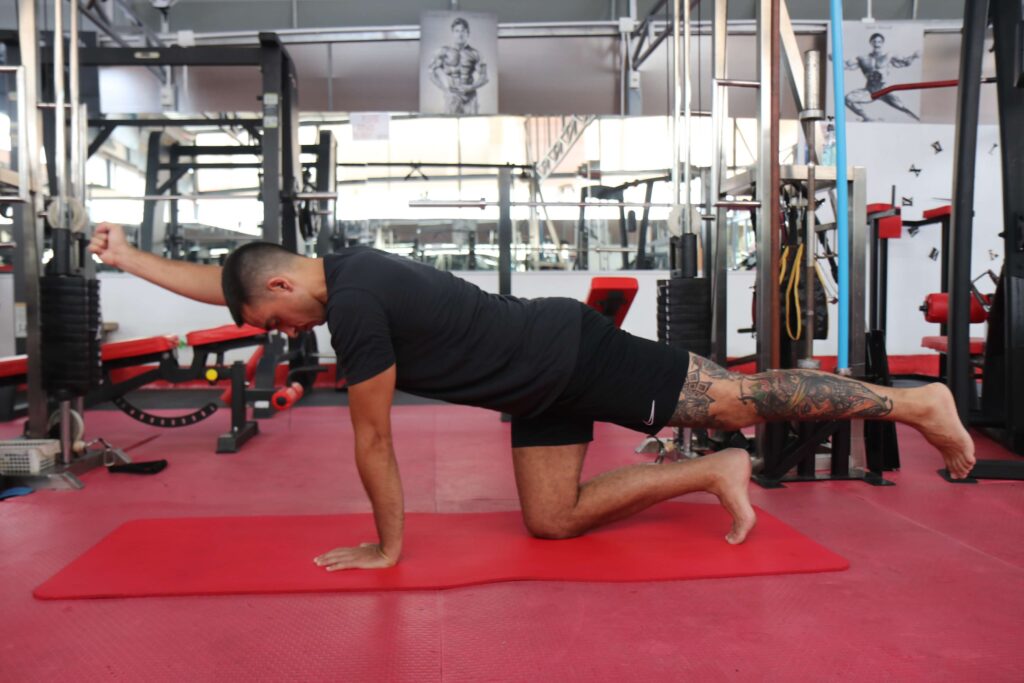
How to Perform Bird Dog
- Starting on all fours, place your knees under your hips and your wrists beneath your shoulders.
- To maintain a straight back and a neutral spine, engage your core.
- Slowly extend one arm in front of you and the opposing leg in the rear; both should be parallel to your spine.
- Once you’ve held for a while, go back to the beginning position.
- With each rep, switch sides and perform the action on the opposite side.
- Complete 8–12 repetitions on each side, or work out for a predetermined amount of reps or period of time.
4. Bear Crawl
The bear crawl is a multiplanar exercise that entails motion in both the sagittal and transverse planes and aims to enhance core stability, balance, and coordination. The muscles of the back, hips, rectus abdominis, obliques, transverse abdominis, and legs muscles are targeted by this functional core stability exercise.
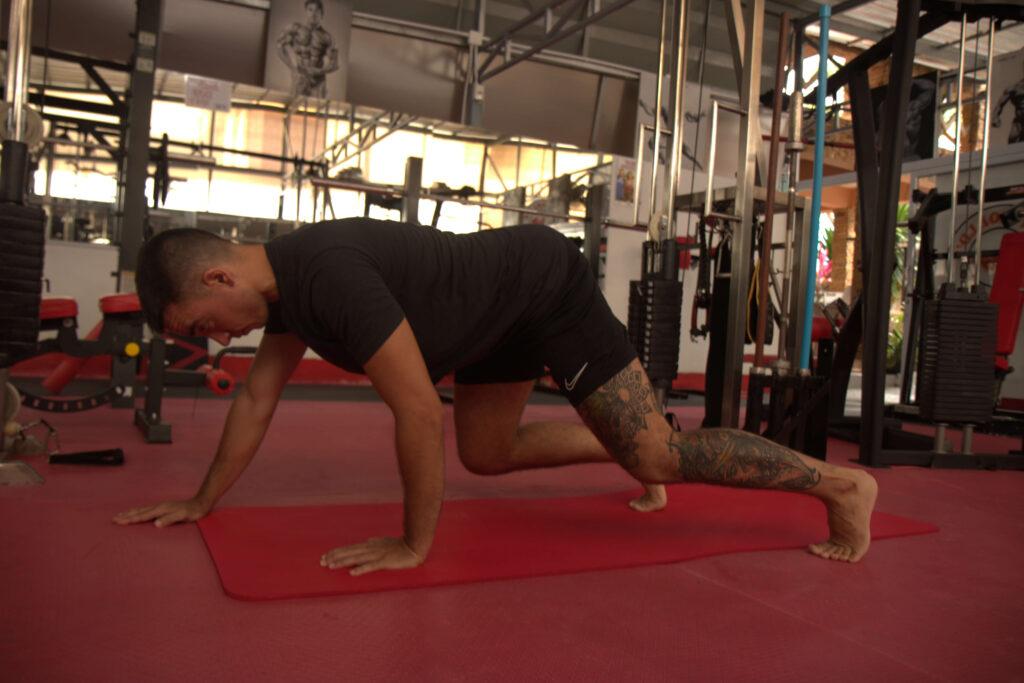
How to Perform Bear Crawl
- Begin on all fours, with your wrists behind your shoulders and your knees beneath your hips.
- Engage your core to maintain a straight back and a neutral spine.
- Step forward with your right hand and left foot, then take the same step with your left hand and right foot.
- Continue crawling forward in a calm and controlled manner.
- To return to the beginning position, repeat the procedure, crawling backward.
5. Plank
The plank is a static exercise that targets the rectus abdominis, obliques, and transverse abdominis in the abdomen as well as the lower back, hips, deltoids, and shoulders. This functional ab workout mostly operates in the sagittal plane and may be done without any special equipment.

How to Perform Plank
- With your feet hip-width apart and your hands under your shoulders, begin in the push-up position.
- Your elbows should be squarely beneath your shoulders when you rest on your forearms after lowering yourself to the floor.
- Maintain a neutral spine and a straight back by engaging your core.
- Hold the posture for a predetermined amount of time—say, 30 to 60 seconds—while breathing normally.
- Repeat the exercise multiple times, progressively extending the time of each set as your strength improves.
6. Side plank
The side plank is a core exercise that works the lower back muscles, hips, glutes, and abdominal muscles including the rectus abdominis, transverse abdominis, and obliques. Since the action entails maintaining a static posture on one side of the body without the use of any equipment, it predominantly operates in the frontal plane. This exercise is a staple in functional abs workouts.
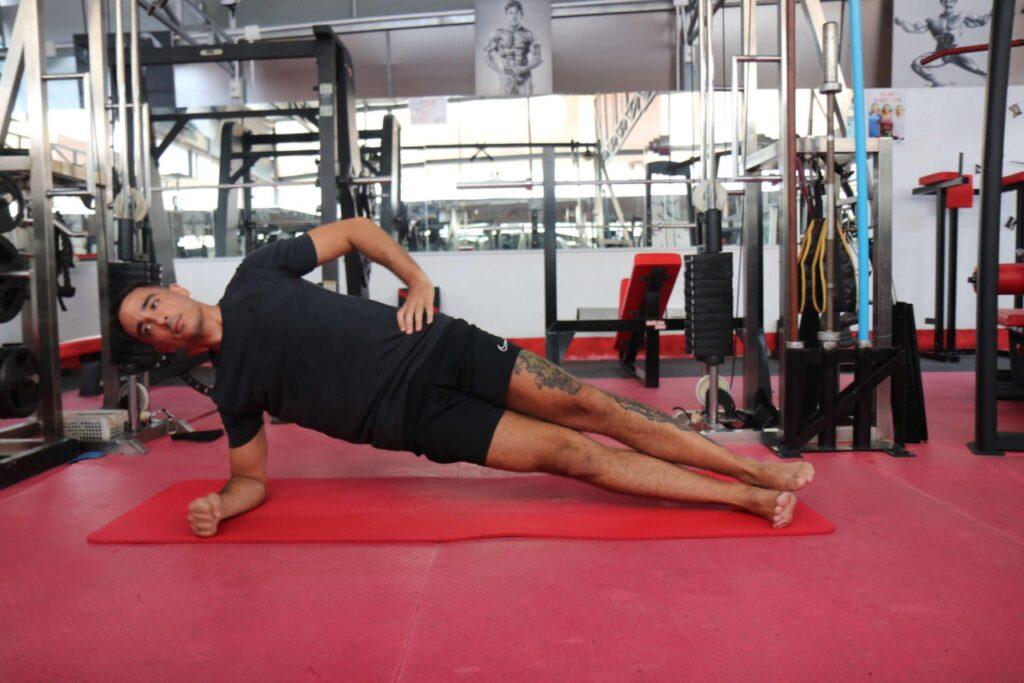
How to Perform Side Plank
- Start with laying on your side with your legs straight and one elbow just under your shoulder.
- Your forearm and the side of your foot should bear the weight of your body as you raise your hips off the ground.
- Hold the posture for a predetermined amount of time—say, 30 to 60 seconds—while breathing normally.
- To evenly train both sides of your body, repeat the exercise on the opposing side.
7. Hollow Hold
The hollow hold is a core exercise that targets the rectus abdominis, obliques, and transverse abdominis muscles as well as the lower back, hips, and glutes. Since the movement entails retaining a still position with the body in a concave form, it predominantly operates in the sagittal plane. It is one of the best functional core exercises for building endurance.

How to Perform Hollow Hold
- Your arms and legs should be straight up toward the ceiling while you lay on your back.
- While maintaining your lower back pushed to the floor, use your core to elevate your head, neck, and shoulders.
- Reach your arms toward your toes while maintaining straight arms and legs.
- Hold the posture for as long as you can while maintaining appropriate form, which should be between 30 and 60 seconds.
8. Body Saw
The body saw is a core exercise that works hips, glutes, lower back, and abdominal muscles such as the rectus abdominis, obliques, and transverse abdominis. It works in the sagittal plane since the activity includes sliding the body forward and backward down the ground while maintaining a plank posture and may be performed with a variety of equipment, such as a slider or a towel. This is an excellent addition to any functional core workout routine.

How to Perform Body Saw
- Begin in a high plank with your hands under your shoulders and your feet hip-width apart.
- Put your feet up on the slider or a towel.
- Maintain a straight line from your head to your heels by engaging your core and keeping your hips level throughout the action.
- Slide your body forward and backward with your feet, keeping your hands fixed on the floor.
9. Thread the Thoracic Needle
Thread the thoracic needle is a core exercise that mainly focuses on the core muscles, especially the oblique muscles and spinal erectors, upper back, and shoulders. It is carried out in the transverse plane of motion, which entails rotations about the body’s midline. This is a prime example of core functional exercises that enhance rotational strength and flexibility.
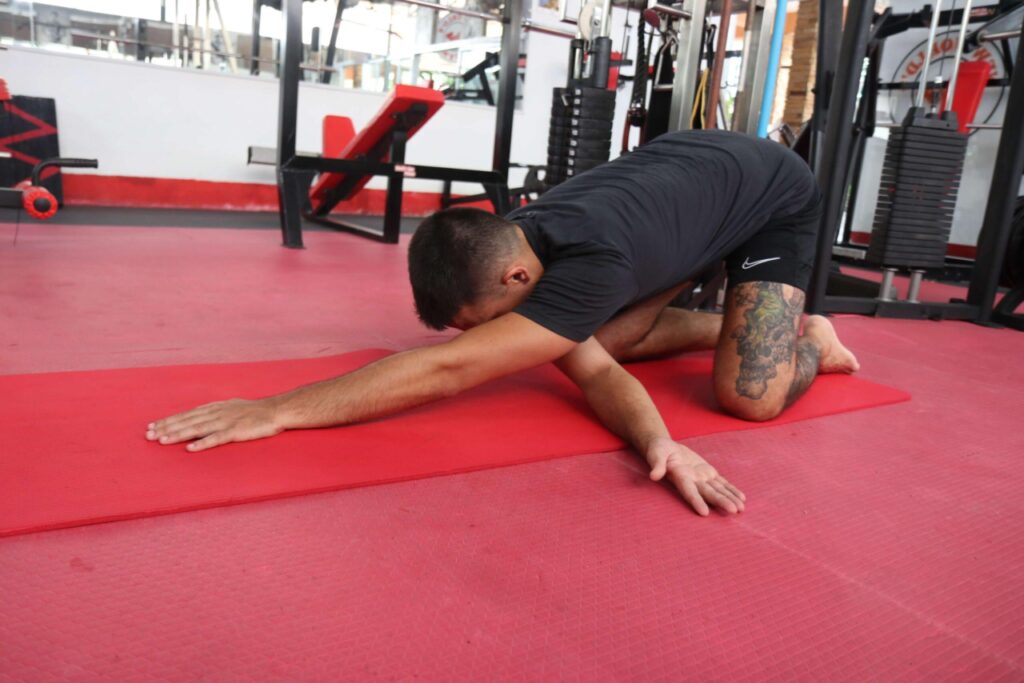
How to Perform Thread the Thoracic Needle
- Begin on your hands and knees, with your wrists behind your shoulders and your knees beneath your hips.
- Raise your right hand from the floor and reach for the ceiling.
- Allow your right shoulder blade to glide down the floor by rotating your body to the left and reaching your right arm beneath your left armpit.
- Hold for 2-3 seconds before returning to the beginning position.
- Repeat the movement on the other side.
10. Landmine Oblique Twist
Landmine oblique twist targets the core’s oblique muscles as well as the rectus abdominis and spinal erectors. The movement is carried out in the transverse plane of motion using a barbell or a landmine attachment, which enables the barbell to be secured at one end and creates a pivot point for the twisting action.
It is one of the best functional core stability exercises. Depending on the amount of external resistance you use, it will work your torso’s rotational power and endurance.
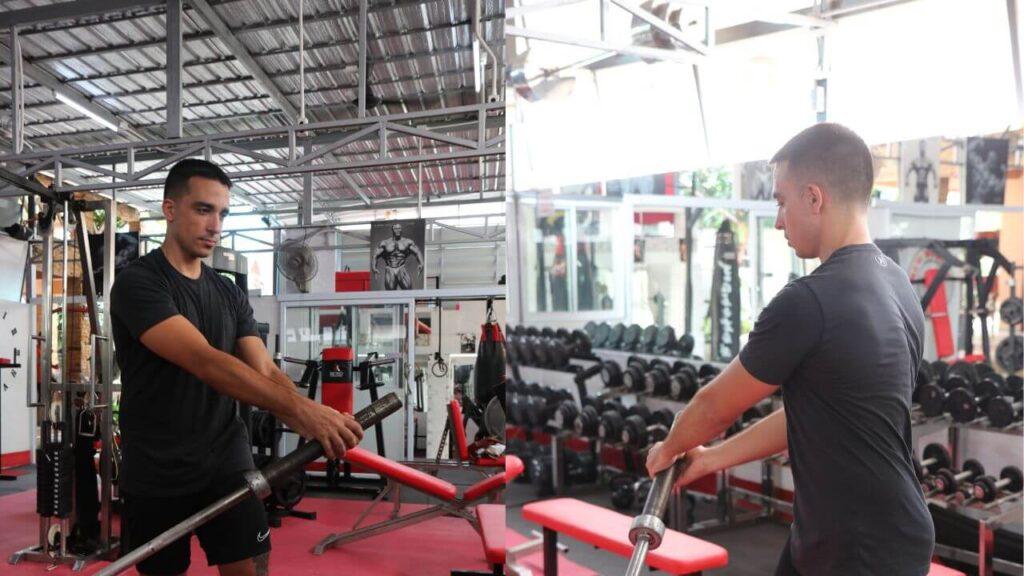
How to Perform Landmine Oblique Twist
- Place the barbell at your side while standing with your feet shoulder-width apart.
- Using both hands, hold the barbell while maintaining your elbows close to your torso.
- Bring the barbell across your body by turning your waist to the side and bending your torso.
- Hold for a little period before going back to the beginning position.
Expert Shares 5 Simple Training Rules to Get Your Abs Ripped
In a YouTube video, Dr. Mike Israetel, who holds a PhD in sports physiology and is currently the head science consultant for Renaissance Periodization, shares five simple rules to follow when training your abs for maximal muscle gains:
“These are really helpful tips and hints to consider for your ab training. First, normal repetition ranges apply exactly as well to abdominal training to make your abs bigger and stronger and pop out more and give you more function as these training ranges do for every other muscle group. Two, do a full range of motion for each of ab exercises. Three, do hanging leg or knee raises. Four, focus on the eccentric portion of the lift and make sure to control the movement rhough the whole range of the eccentric phase. Five, incorporate the principle of progressive overload to ensure progression and adequate adaptations to your muscle tissue.”
What Are Functional Core Workouts?
Functional core workouts are exercises that target core muscles, hips, and lower back with the goal of enhancing stability, balance, and general functional fitness. Incorporating functional ab exercises into your routine can help you achieve a stronger, more resilient core.
Functional core exercises are designed to simulate real-life motions and activities, in contrast to typical core workouts, which may only be concerned with achieving six-pack abs [2].
This makes them more difficult and efficient since it works many muscle groups concurrently and requires actions in several planes of motion.
Functional exercises that just use your body weight or equipment like kettlebells, dumbbells, or medicine balls can be used in functional core training. They are a practical and adaptable technique to increase your general fitness because they can be done anytime, anyplace.
Steps to Build a Functional Core
Building a functioning core entails working not only the abs, but also the hips, lower back, and sides of the body. Here are several things to incorporate into your workout for building a functional core:
- Put emphasis on multi-joint exercises: Focus on exercises that use many muscular groups at once, such as squats, lunges, and deadlifts, to develop a functioning core. These core functional exercises will work your core muscles throughout these workouts since they help to support your body.
- Check your current fitness level: It’s crucial to evaluate your current level of fitness and pinpoint any core muscle weakness before beginning a functional core training plan. You may do this by taking a series of quick tests to gauge your stability, balance, and posture.
- Focus on correct form: Proper technique is key for getting the most out of your functional core training regimen. Pay close attention to your technique and make sure you’re working the right muscles during each exercise.
- Don’t forget the lower back: For stability and balance, the lower back muscles are extremely important. Target these muscles in your workout by including exercises like bird dogs, bridges, and superman.
- Add rotational movements: Building a strong core requires rotational motions like Russian and oblique twists. They work the muscles on the sides of your body and enhance stability and balance.
You may create a strong, functional core by following these steps, which will allow you to perform daily tasks and sports activities with more comfort and confidence [3].
FAQs
Are Functional Core Exercises Effective?
Yes, functional core exercises are effective for strengthening core muscles and boosting overall fitness [4].
What Are the Big 3 Core Exercises?
The big 3 core exercises, also known as McGill’s “Big 3”, are curl up, side plank, and bird dog.
What Is the Hardest Core Exercise?
A Dragon Flag is the hardest core exercise to complete since it needs a tremendous amount of strength, stability, and coordination.
Why Is Building Functional Core Necessary?
Building a functional core is necessary not just for getting in shape, but improving the quality of your life.
You’ll see benefits in your posture, balance, and athletic performance as well as a decrease in lower back discomfort and injury risk if you have a strong and stable core.
Considering these advantages, adding functional core workouts to your training regimen is a wise investment in your general health and well-being.
So let’s start building a stronger, more effective core together and see the wonderful effects it has on your day-to-day activities.
Start Building Your Dream Body Today
Ready to elevate your fitness game without falling into the trap of dull, repetitive routines that just don’t deliver? Imagine sculpting your ideal physique and boosting your health, all while still enjoying life’s pleasures, like those irresistible weekend getaways and your aunt’s legendary cheesecake. With our online fitness and nutrition coaching service, you don’t have to compromise. Dive into a personalized fitness journey that blends perfectly with your lifestyle, not against it. Book your completely free discovery consultation today, and take the first step towards a transformation that doesn’t require giving up the joys of life.

“I was skeptical about online fitness coaching, but Functional Body Savage completely changed my perspective. Vanja and Radomir’s personalized approach and attention to detail have helped me achieve goals I never thought possible. I’m stronger, more confident, and grateful for their guidance.”
Emily Thompson, San Francisco, CA
Learn More About Our Online Coaching ServiceReferences:
- https://www.health.harvard.edu/healthbeat/the-real-world-benefits-of-strengthening-your-core
- https://www.health.harvard.edu/healthbeat/core-conditioning-its-not-just-about-abs
- https://www.ncbi.nlm.nih.gov/pmc/articles/PMC9227831/
- https://www.ncbi.nlm.nih.gov/pmc/articles/PMC7345922/

